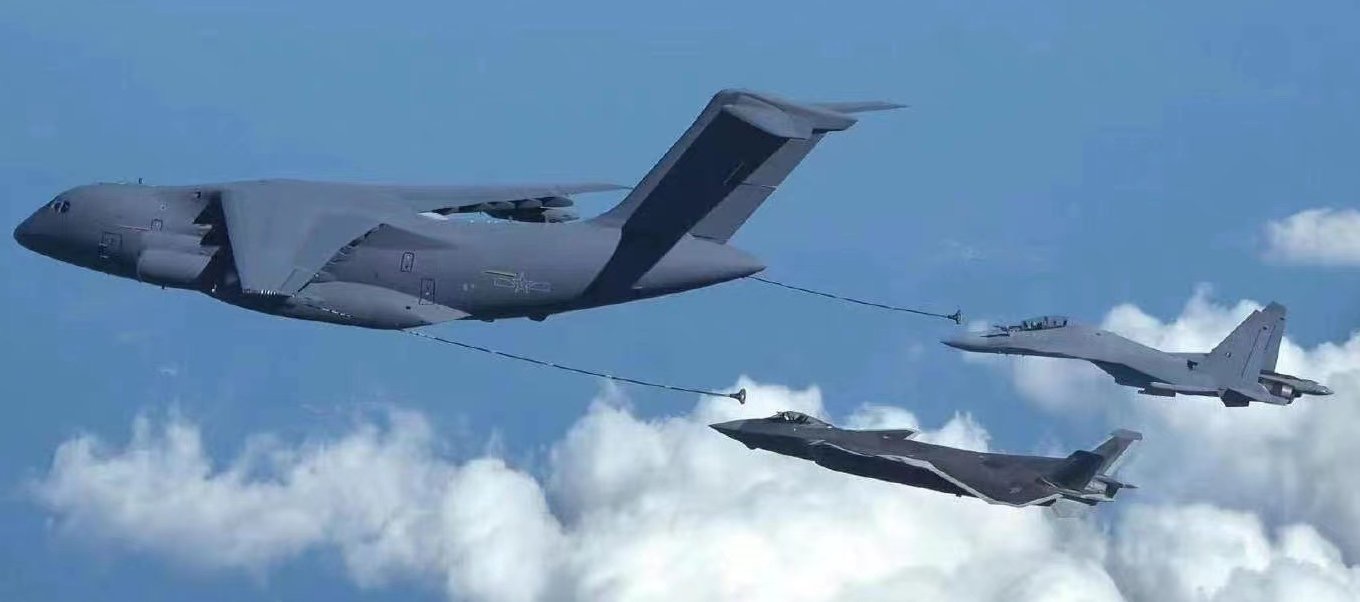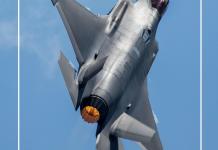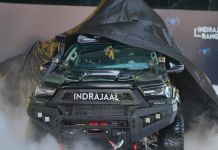A major air base under China’s Southern Theatre Command (STC) has received J-16 fighters, indicating it continues to perceive a US attempt to break through its blockade of Taiwan through the northern part of the South China Sea (SCS).
While its Eastern Theatre Command (ETC) will be primarily concerned with a Taiwan operation, August’s unprecedented live military drills around the island also saw significant participation from the STC and some from the Northern Theatre Command (NTC).
Finally, it can be revealed! ?
It was rumoured since some time already, but these images clearly prove, the 6th Air Brigade at Suixi is now also operating J-16s!
At least number 61675 can be seen – with construction number looks like 1006 – and I know 61677 since October. pic.twitter.com/3hgMn80J5t
— @Rupprecht_A (@RupprechtDeino) November 24, 2022
Northern Part of South China Sea
A Tweet by Chinese military aviation expert Andreas Rupprecht showed a J-16 landing at Suixi air base in Guangdong, home to the 6th Air Brigade.
Coming under the Southern Theatre Command (STC), Chinese observers hail it as the PLAAF “strengthening its southern direction,” which might “bolster the ETC’s Taiwan Special Military Operation (SMO).”
On a different note, the firmness and surety in many such comments on three Chinese military discussion websites are stunning.
This indicates that Beijing has resigned to the possibility of having to take Taiwan by force, which it never ruled out if “peaceful reunification” failed due to Taiwan declaring independence, external provocation, or Taiwan being internationally recognized as a country.
China has long anticipated the United States military to break through a Chinese military blockade of Taiwan through the northern part of the South China Sea.

EurAsian Times had previously reported the PLAN sharpening its anti-submarine warfare skills by sending a Y-8Q aircraft under the STC for nighttime submarine detection drills. The PLAN’s target is the US Navy’s nuclear-powered submarines (SSNs and SSBNs) which would use the Basi Channel and the Luzon Strait in the upward slope of the SCS.
The induction of the J-16 seems to be an effort in that direction. Speaking to the EurAsian Times, Rupprecht said that Suixi and the 6th Air Brigade was the PLAAF’s sole unit and base that operates the Russian-origin Su-35 and Su-30MKK as trainers.
While long having hosted a WZ-Z unmanned aerial vehicle (UAV) detachment and bomber aircraft, it recently underwent “dramatic expansion.”
While Rupprecht believes this will entail transferring the Su-30MKKs, he wonders if the Su-35s, too, might be sent elsewhere. “This hints the 6th AB possibly getting an additional ‘dadui’ or two of J-16s, making it de facto a much larger brigade than others,” he added. A ‘dadui’ is a group of usually eight to ten aircraft.
Surround & Cut-Off
In the event of a Taiwan contingency, China’s J-20, H-6K, J-10, and J-16 jets from the People’s Liberation Army Air Force (PLAAF) and People’s Liberation Army Navy (PLAN) would undertake “multi-directional” “high intensity” “close-in deterrence joint sea and air assaults.”
These would be preceded by “joint containment and control, sea assault, land strike, and air superiority operations.” The August drills conducted the above maneuvers and are expected to pan out more or less the same way.
Swarming Taiwan with a flood of boats from its civilian militia and legacy jets turned drones like the J-6, J-7, and J-8 is another distinct possibility. This forces Taiwan to expend its anti-ship and air defense missiles. China has already identified possible landing zones if the need for an amphibious operation arises.
These would be carried out by civilian roll-on roll-over (RoRo) vessels and car carriers carrying hundreds of tanks, armored personnel carriers, infantry fighting vehicles, and military trucks.
The Chinese military has practiced loading ZBD-04 or VN17 IFVs, PLZ-05 Self-Propelled Guns (SPG), tactical vehicles, and the ZTD-05 amphibious armored vehicles from RoRo vessels as a part of an official arrangement well documented by state media.
The PLAN’s dedicated landing platform docks (LPD) and landing helicopter docks (LHD) amphibious assault ships can launch their complement of ground vehicles and attack helicopters like the Z-10.

While China doesn’t face a military threat from the small and meager Taiwanese military, its only faces three challenges; first is a military intervention by the United States that might obstruct Chinese military operations.
Even though China’s current level of preparation can deter and possibly take on such an eventuality, it will still be a significant pressure point. This can lead to a regional conflagration that might ignite the other two flashpoints in the western Pacific, the South China Sea, and the Korean Peninsula.
The last is an unexpected resistance and insurgency on the island. Beijing expects any Taiwanese leadership to fold quickly, given a significant amount of the population that wants to bury the hatchet with Beijing for political, cultural, and economic reasons.
The recent victory of the pro-unification Kuomintang (KMT) against President Tsai Ing-wen’s Democratic People’s Party (DPP) in municipal elections led to her resignation and has assured China of a dependable political capital in Taipei.
Interestingly, the KMT is the Communist Party of China’s (CPC) civil war rivals who, led by Chiang Kai-shek, lost and fled to Taiwan.
Both CPC and Taiwan since then have claimed to be the authentic representative government of China, but most countries, including the US, adhere to the One China Policy. This recognizes the People’s Republic of China (PRC) as China, of which Taiwan is a part.
Lastly, the insurgency itself can lead China to use harsher military force, which might cause infrastructural, civilian, and, most importantly, industrial damage, impacting the supply of microchips to the world, including China.
Many Taiwanese and Chinese businesses have close ties, and a war that causes civilian casualties will trigger severe economic crises in both nations and east Asia and the world.
China is well aware of the repercussions and would be banking on displaying overwhelming military force by either surrounding the Taiwanese military or undertaking limited military action to take out a significant proportion of their defenses.
Beijing hopes the island will perceive the inevitability of mainland Chinese rule and present it as a fait accompli, finally forcing the leadership to cave in.
- The author can be reached at satamp@gmail.com
- Follow EurAsian Times on Google News




